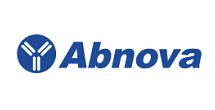CALR monoclonal antibody, clone CGO-3



* The price is valid only in USA. Please select country.
-
More Files
- More Functions
-
Specification
Product Description
Rabbit monoclonal antibody raised against synthetic peptide of human CALR.
Immunogen
A synthetic peptide corresponding to human CALR.
Host
Rabbit
Theoretical MW (kDa)
48.142
Reactivity
Human
Form
Liquid
Purification
Affinity purification
Isotype
IgG
Recommend Usage
Flow Cytometry (1:50)
Immunocytochemistry (1:50-1:200)
Immunofluorescence (1:50-1:200)
Immunohistochemistry (1:50-1:200)
Immunoprecipitation (1:50)
Western Blot (1:500-1:2000)
The optimal working dilution should be determined by the end user.Storage Buffer
In PBS, 150 mM NaCl, pH 7.4 (50% glycerol, 0.02% sodium azide).
Storage Instruction
Store at -20°C for one year. After reconstitution, at 4°C for one month. It can also be aliquotted and stored frozen at -20°C for a longer time. Avoid repeated freezing and thawing.
Note
This product contains sodium azide: a POISONOUS AND HAZARDOUS SUBSTANCE which should be handled by trained staff only.
-
Applications
Western Blot (Cell lysate)
Western Blot analysis of Lane 1: HeLa and Lane 2: HepG2 cell lysates with CALR monoclonal antibody, clone CGO-3 (Cat # MAB19690).Immunohistochemistry
Immunocytochemistry
Immunofluorescence
Immunoprecipitation
Flow Cytometry
-
Gene Info — CALR
Entrez GeneID
811Protein Accession#
P27797Gene Name
CALR
Gene Alias
CRT, FLJ26680, RO, SSA, cC1qR
Gene Description
calreticulin
Omim ID
109091Gene Ontology
HyperlinkGene Summary
Calreticulin is a multifunctional protein that acts as a major Ca(2+)-binding (storage) protein in the lumen of the endoplasmic reticulum. It is also found in the nucleus, suggesting that it may have a role in transcription regulation. Calreticulin binds to the synthetic peptide KLGFFKR, which is almost identical to an amino acid sequence in the DNA-binding domain of the superfamily of nuclear receptors. Calreticulin binds to antibodies in certain sera of systemic lupus and Sjogren patients which contain anti-Ro/SSA antibodies, it is highly conserved among species, and it is located in the endoplasmic and sarcoplasmic reticulum where it may bind calcium. The amino terminus of calreticulin interacts with the DNA-binding domain of the glucocorticoid receptor and prevents the receptor from binding to its specific glucocorticoid response element. Calreticulin can inhibit the binding of androgen receptor to its hormone-responsive DNA element and can inhibit androgen receptor and retinoic acid receptor transcriptional activities in vivo, as well as retinoic acid-induced neuronal differentiation. Thus, calreticulin can act as an important modulator of the regulation of gene transcription by nuclear hormone receptors. Systemic lupus erythematosus is associated with increased autoantibody titers against calreticulin but calreticulin is not a Ro/SS-A antigen. Earlier papers referred to calreticulin as an Ro/SS-A antigen but this was later disproven. Increased autoantibody titer against human calreticulin is found in infants with complete congenital heart block of both the IgG and IgM classes. [provided by RefSeq
Other Designations
Sicca syndrome antigen A (autoantigen Ro; calreticulin)|autoantigen Ro
-
Interactome
-
Pathway
-
Disease
- +1-909-264-1399
+1-909-992-0619
Toll Free : +1-877-853-6098 - +1-909-992-3401
- sales@abnova.com















